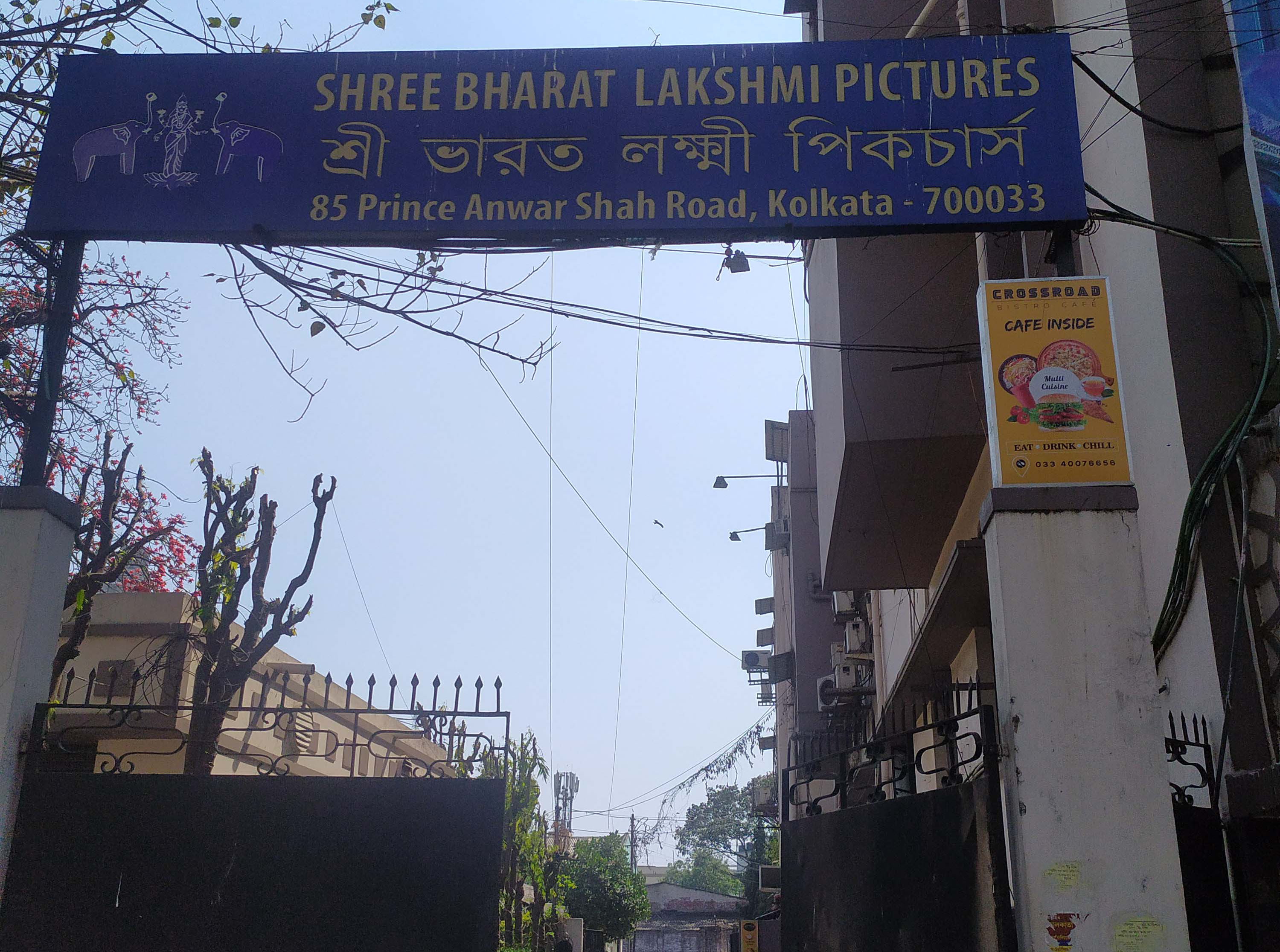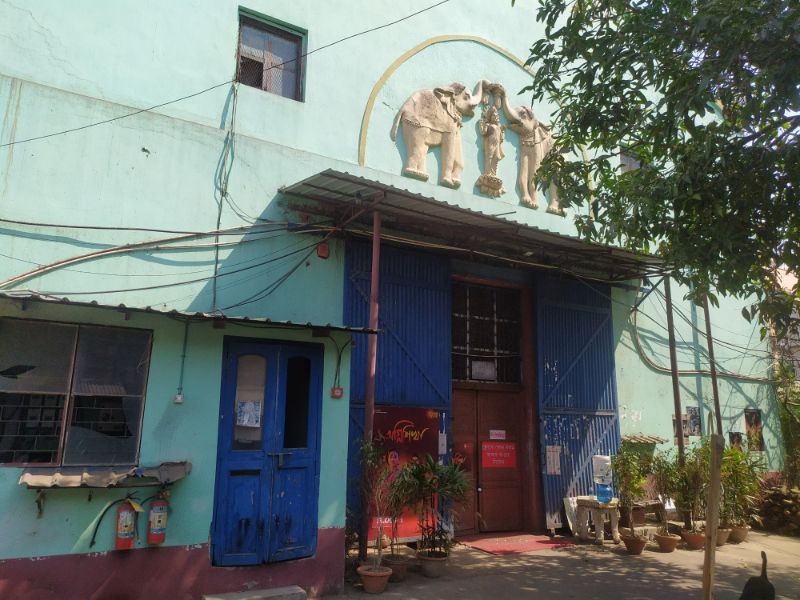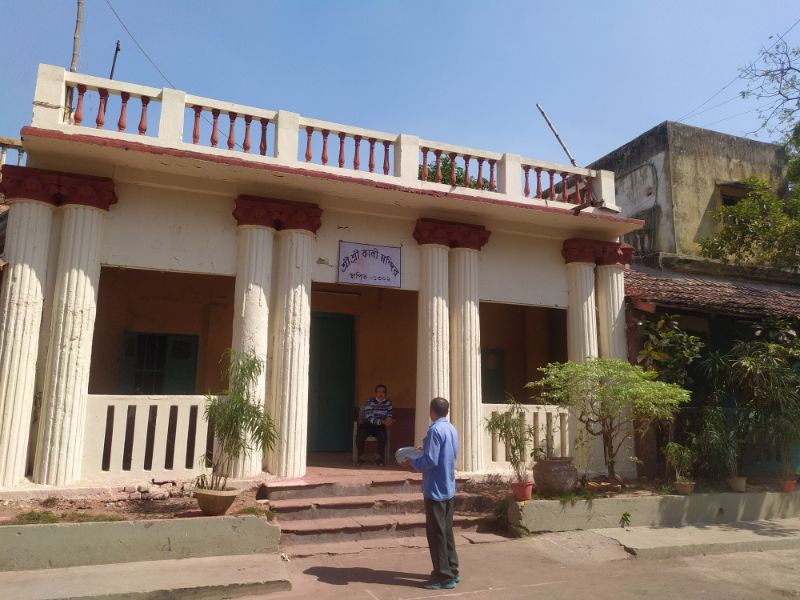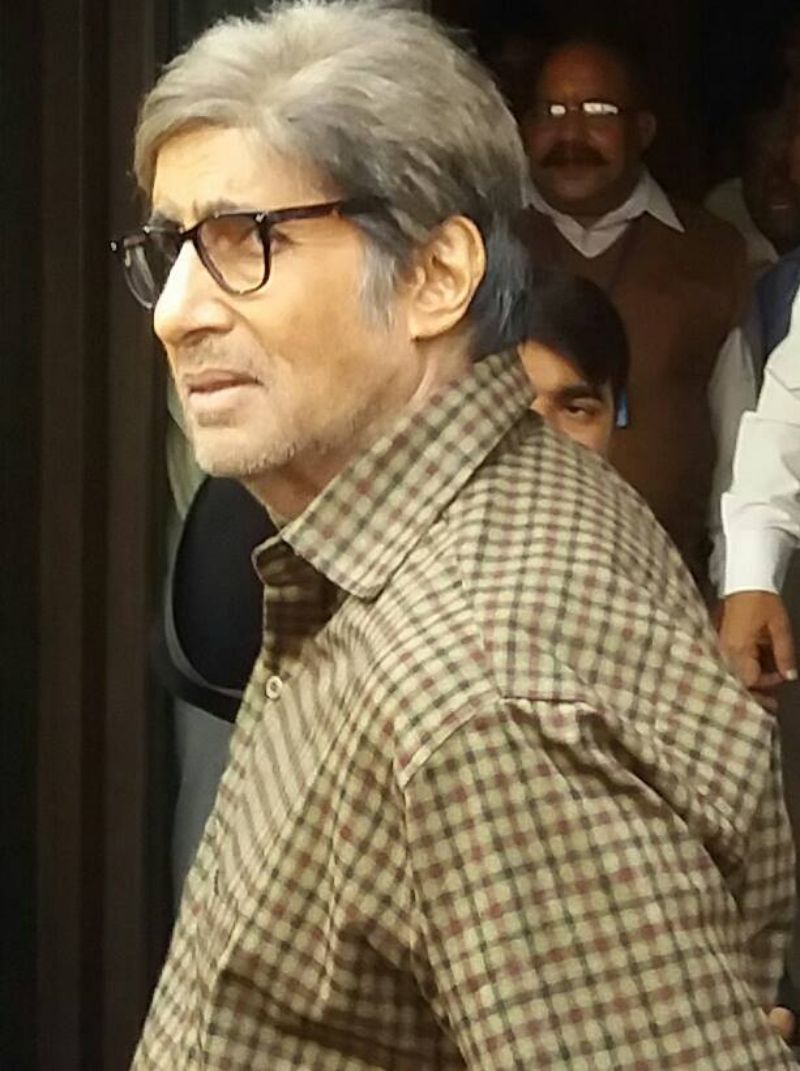
Bharat Lakshmi Studio
Address: Prince Anwar Shah Road
Years Active: 1933-present
First Film: Chand Saudagar
Language: Bengali
Director: Prafulla Ray
Released on: 17.03.34 at Crown
If there is someone who can be addressed as Madan’s successful successor, it is Babulal Choukhani. He was in touch with the Madans during the last phase of the studio. Babulal’s Shree Bharat Lakshmi Pictures had presented two Bengali films of the Madans. One was Krishnakanter Will (1932). The other was Kalanka Bhanjan (1933). They also produced two Hindi films under the Madan banner – Chatra Bakavali (1932) and Pati Bhakti (1932).
Babulal hit upon the idea of owning his own studio after gathering experience in productions. The Bharat Lakshmi Studio came up on Prince Anwar Shah Road. Charles Creed was in charge of the camera and sound departments. That apart, the likes of Bibhuti Das, VV Dante, Gita Ghosh, Prafulla Chowdhury, Jayantibhai Jani were in the cinematography department. While Bhupen Ghosh, A Gafur, Manna Ladia were part of the sound department, Jagat Roychowdhury, Purna Chattopadhyay joined the laboratory. The editing wing had Shyam Das, Sukumar Mukhopadhyay and Sudhindra Pal.
Prafulla Roy directed the first Bengali film under this banner in 1934. It was named Chand Saudagar. The second film was in Hindi. Titled Ramayan, it was jointly directed by Pandit Sudarshan and Prafulla Roy. The film opened at Babulal’s own cinema – Bharat Lakshmi on Chittaranjan Avenue. Soon films were made in other languages too. That included Sati Sulochana (Tamil), Sati Sakkubhai, Maya Anjanam (Telugu), Taqdeer Ki Top (Gujarati), Matwali Meera (Punjabi) and Rupahi (Assamese). Of course, Hindi films like Bhakt Ke Bhagwan, Insaf Ki Tope, Kumari Bidhwa, Samaj Patan, Daku Ka Ladki, Diljani, Gareeb Ki Tope were made in abundance. All these productions gave a strong footing to Bharat Lakshmi. This is the only Kolkata studio that has made films in seven languages.
Yet, it was with Bengali cinema that Bharat Lakshmi has had its strongest ties. Though not a Bengali himself, Babulal had close affinity towards the Bengali culture. He also understood the Bengali mindset well. That’s why a number of milestones of Bengali cinema had their strongest ties with Bharat Lakshmi. Two years after doing the first Bengali film came Charu Roy’s Bengali (1936). The very next year, came Madhu Bose’s Alibaba (1937). Abhinoy came in 1938.
The studio was given out on rent from the 1940s. Films like Judge-Saheber Natni (1943), Pratikar (1944) and Purbarag (1947) were all shot there. Documentaries like Coronation Cup Football (1937) and Banga Darshan (1938) based on the theme of traveling in Bengal were shot there too.
Work slowed down in the 50s. Yet, Ganyer Meye (1951), Maa O Chhele (1954), Mirabai (1960) were produced there. Films like Bansher Kella (1953) and Tonsil (1956) were shot there too. But it was difficult to sustain the studio. The production and studio wings closed down too. In 1971, Navina cinema came up on a part of the studio land.
That was not the end. Bharat Lakshmi set a rare example of staging a comeback. Babulal’s son, Jyoti Choukhani, produced Mrinal Sen’s Khandahar (1984). Bharat Lakshmi reopened in a new avatar in 1995. Today, Bharat Lakshmi is a busy studio, just the way it was earlier.
Selected Bengali Filmography
Chand Saudagar (1934), Bangali (1936), Bejay Ragarh (1936), Ekti Katha (1936), Alibaba (1937), Abhinoy (1938), Parashmoni (1939), Thikadar (1940), Fever Mixture (1940), Abatar (1941), Jiban Sangini (1942), Matir Ghar (1944), Grihalakshmi (1945), Ganyer Meye (1951), Maa O Chhele (1954), Rajpath (1956), Mirabai (1960)
These films were shot at Bharat Lakshmi Studio:
Abartan (1936), Byathar Dan (1936), Sashinath (1937), Khana (1938), Bijoyini (1941), Nandini (1941), Samaj (1944), Dabi (1943), Pratikar (1944), Purbarag (1949), Tathapi (1950), Se Nilo Biday (1951), Bansher Kella (1953, jointly with Calcutta Movietone), Tonsil (1956, jointly with Indrapuri Studio), Kalpurush (2005)
Did You Know?
Amitabh Bachchan has shot at the Bharat Lakshmi Studio twice over. He first came in 2007 for shooting Rituparno Ghosh’s The Last Lear. He returned in 2016 to shoot Ribhu Dasgupta’s Teen. These photos are also appended here.




